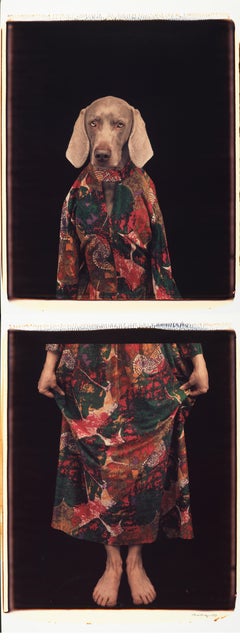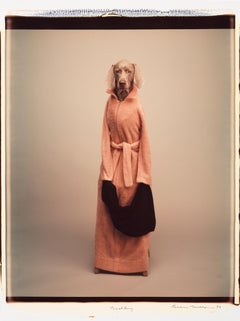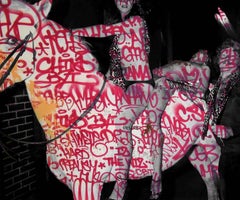People Animal Prints
to
194
879
300
321
151
91
Overall Width
to
Overall Height
to
574
320
149
97
66
32
23
21
21
19
9
2
1
67
60
43
27
22
210
218
995
324
11
12
35
45
49
62
97
268
111
101
201
950
737
53
2,722
1,747
1,455
1,086
862
568
497
457
420
406
360
353
309
254
219
190
176
148
147
143
674
556
310
175
100
194
632
815
807
Art Subject: People
Dressed from Below - William Wegman (Colour Photography)
Located in London, GB
Dressed from Below - William Wegman (Colour Photography)
Signed and inscribed with title
Two unique colour Polaroid prints, printed 1994
24 x 20 inches each
The dogs, bewigged and b...
Category
1990s Conceptual Color Photography
Materials
Polaroid
Towelling - William Wegman (Colour Photography)
Located in London, GB
Towelling - William Wegman (Colour Photography)
Signed and inscribed with title
Unique colour Polaroid print, printed 1993
24 x 20 inches
The dogs, bewigged and bedecked with outfit...
Category
1990s Conceptual Color Photography
Materials
Polaroid
My Coo Kie - William Wegman (Colour Photography)
Located in London, GB
My Coo Kie - William Wegman (Colour Photography)
Signed and inscribed with title
Unique colour Polaroid print, printed 1991
24 x 20 inches
The dogs, bewigged and bedecked with outfi...
Category
1990s Conceptual Color Photography
Materials
Polaroid
Untitled (Princess)
Located in New York, NY
Vintage chromogenic print (negative sandwich)
(Edition of 12)
Estate stamp in black ink, verso
This artwork is offered by ClampArt, located in New York City.
“Mark was an outlaw on...
Category
1980s Other Art Style Photography
Materials
C Print
Feathered up Peacock II
By Versaweiss
Located in New York, NY
Versaweiss
Feathered up Peacock II, 2016
Archival pigment print and acrylic color spray on archival mat paper
50 x 50 cm
Unique
Don’t Kill Bambi: The studio 54 phenomenon repo...
Category
2010s Contemporary Animal Prints
Materials
Archival Pigment, Spray Paint
Horse Tag
By Versaweiss
Located in New York, NY
Versaweiss
Horse-tag, 2016
Archival pigment print on archival mat paper
100 x 120 cm
Edition of 5
Don’t Kill Bambi: The studio 54 phenomenon repositioned at times of crisis
...
Category
2010s Contemporary Animal Prints
Materials
Archival Pigment
Dorazon d Pollo 2
By Luna Trelles
Located in New York, NY
Luna Trelles
Dorazon d Pollo 2, 2015
Archival pigment print
Edition of 10
49 x 39 inches (124 x 80 cm)
Category
21st Century and Contemporary Contemporary Figurative Prints
Materials
Archival Pigment





